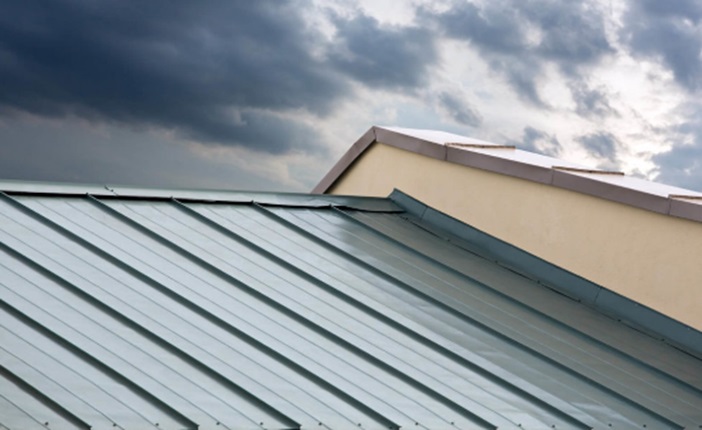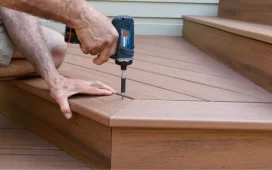You’ll need to prepare your home for the upcoming hurricane season. It is necessary to ensure that it can withstand strong winds and heavy rain. You probably know that storms in Florida can be very strong. It’s important to have a roof that is durable and will protect you, your family, and your possessions. There are roofing materials that can withstand strong winds. Our team at Old Time Roofing is able to install and replace these roofs. Find out which roofing materials and roof designs are best for hurricanes.
What material should you choose?
The materials we have listed are all good for covering your roof, but which one is the best to use during hurricanes? See which roof material we determined to be the best for hurricanes.
ASPHALT SHINGLES
Asphalt shingles are the most common type of roofing material used in Florida, mainly because they are the least expensive. Since they are less expensive, they might be less likely than other roofing materials to withstand hurricane-force winds. Most three-tab roof shingles can withstand wind speeds of up to 60-70 mph. This is the speed at which most tropical storms occur. They are lightweight and affordable but also more susceptible to blowing off. Architectural and dimensional shingles, on the other hand, are heavier and can withstand winds up to 110 mph. This makes them more durable in a hurricane. Old Time Roofing can help you select the right shingles to withstand high winds.
METAL
Metal is a great option for storm-proof roofs. It’s not only beautiful but also very durable, as it can withstand winds between 110-160 mph. In a hurricane-prone area, investing in a metal roofing system can be a smart decision. It will protect the top of your home from rain driven by wind and stay intact. Metal roofing systems come in three different options: exposed fastener (with visible fasteners), hidden fastener (with hidden fasteners), and stamped. Our team at Old Time Roofing can help you decide which type of metal roofing is best for your home.
SLATE TILES
They are heavy and expensive but have a great deal of durability in terms of rain and wind resistance. Slate tiles are one of the best roofing materials for wind resistance. Slate tiles are rigid, so the wind can’t get under them to tear them off or damage the surface below. If you decide to go with slate, make sure that your roofer is experienced in installing this material.
WOOD SHINGLES
Wood shingles can withstand hurricane winds, but they might not last as long as other options. Wood shingles need to be maintained regularly to ensure they last as long as possible. Hurricanes, particularly if you live in a hurricane-prone area, can reduce the lifespan of wood shingles. Wood shingles are beautiful and natural, even if they’re not as durable as some other roofing types.
WINNER: METAL ROOFING
Florida homeowners consider metal roofing to be the best material for roofing against high winds. It offers an additional layer of protection to those living in hurricane-prone regions as well as near trees and forests.
How should your roof be designed?
Material isn’t enough to ensure that your roof will withstand the destructive winds and rain from hurricanes. It is important to consider the design of your roof when protecting it. The design of your roof will reduce wind damage to your home as much as possible. What you need to keep in mind while installing your roof is:
ROOF STYLE
Hip roofs with four slopes will perform better in hurricanes and tropical storms compared to gable roofs, which have only two slopes. The reason gable roofs are more common is that they are more affordable. Gables can be damaged by winds that hit the horizontal side of the home. Hip roofs can be a good option if you want a roof that can withstand hurricanes, whether it’s all year round or only for a few months.
ROOF PITCH
Experts recommend that the slope of a roof should be at least 30 degrees to handle high winds. It is also called a 7/12 slope, meaning that the roof will get 7 inches higher with every 12 inches run towards the peak. This is because steeper slopes can increase the “sail effect,” making them more vulnerable to high winds. Lower slopes, on the other hand, may be unable to handle rain driven by wind. Science Daily reports that this 30-degree 7/12 slope recommendation has been tested.
FASTENERS
In areas that are subject to hurricanes, you should never use staples for roof fasteners. We recommend hurricane straps and clips that are attached to wall studs or rafters instead of staples. Fasteners may be required in areas that are frequently hit by hurricanes, such as Florida. However, you might want to inquire about whether they would work in your area, even if you live in Florida.
NOTCHED FRIEZE BOARD
Frieze boards are used to bridge the gap between the wall and the roof. This board’s purpose is to prevent wind from entering the gap between the wall and the roof, which could lift the roof structure. Frieze boards can also be used to prevent wind-driven rains from entering the structure of the home. Notched boards will fit better on the rafters and provide a more secure fit.
Here’s What You Can Do
Your roof is most likely to suffer damage when a storm or hurricane hits. Roof damage can lead to more serious problems, such as internal or structural issues. You can also take other measures to prevent roof damage. These include:
– Replace worn shingles. If you want your roof to remain intact, replace the worn-down shingles with newer roof shingles that are hurricane-rated.
– It’s best to have your roof reinforced by professionals before hurricane season.
– Sealing the Gaps – Make sure you check all the areas where the roof meets the walls and ceilings of your house. Seal any cracks you find with a water-resistant sealant.
– Check all your gutters and downspouts. Remove any debris and fix gutters that do not redirect water properly as soon as you can.
How much wind can a roof withstand?
This answer can be different depending on your roof’s shape, pitch, fasteners, frieze board, and other factors. Please call Old Time Roofing if you would like to replace the roof of your home. Our technician will come to your home and give you a free consultation. Visit our roof page now!
This post was written by Ted Williams! Ted is the owner of A Old Time Roofing which is the premier roofing contractors St Petersburg FL Contractor! Ted is a Master Elite Weather Stopper GAF Roofing Contractor, a double award winner of Best Steep-Slope Contractor from GAF and achiever of Master Elite Consumer Protection Excellence from GAF. He has been serving the Pinellas County area since 1978. Old Time Roofing has a tradition of quality workmanship, servicing residential and commercial properties.















